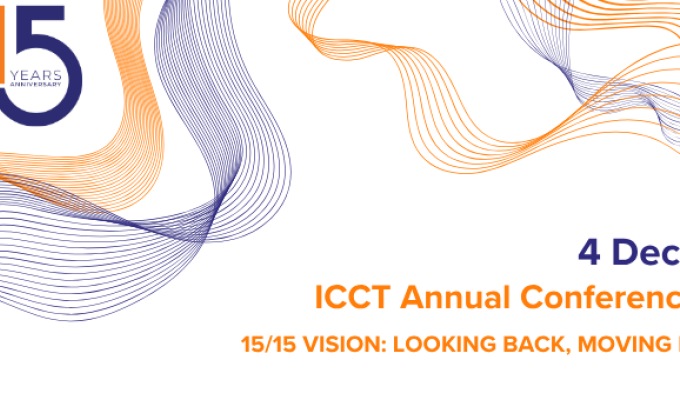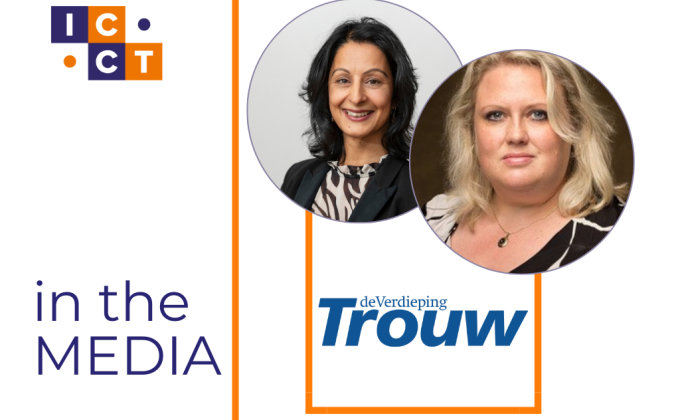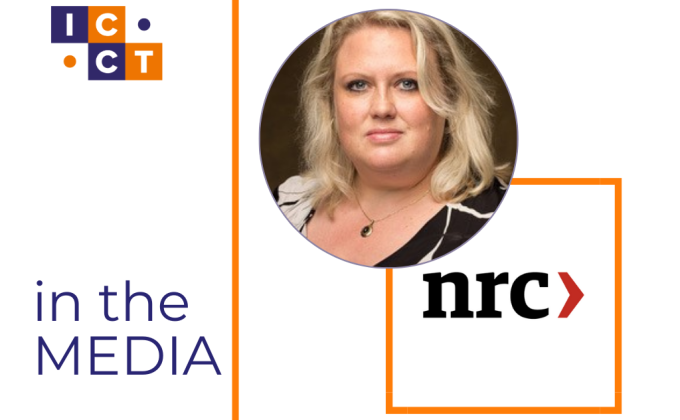Introduction
Identity-based disinformation (IBD) represents a significant threat within the landscape of preventing and countering violent extremism (P/CVE). This form of disinformation, which exploits identity characteristics such as gender, sexuality, race/ethnicity, and religion, poses a unique challenge due to its ability to undermine and polarise communities by attacking individuals' sense of self and belonging. For instance, the proliferation of anti-Rohingya "fake news" and hate speech on social media in Myanmar directly stoked violence and contributed to public acceptance of ethnic cleansing operations. Similarly, the spread of the baseless Great Replacement conspiracy theory in Western countries, alleging an intentional replacement of white populations, has been explicitly cited by perpetrators of terrorist attacks. These examples highlight how IBD can fuel extremism by strengthening malicious narratives and potentially radicalising audiences towards violence.
The authors have been involved in the development of tools and models to address these issues. This article explores the phenomenon of IBD in more detail, discussing its dangers, the challenges in addressing the issue, and, importantly, suggesting tools and approaches that may help to counter the threat.
The Role of IBD in Fuelling Extremism and Terrorism
The targeting of core identity characteristics makes IBD a particularly effective instrument in terrorist and extremist propaganda, which often targets specific groups of people – whether political opponents or representatives of a particular religion, race, or gender. IBD can help strengthen extremist narratives through polarisation and othering, mobilisation towards violence, and the suppression of activism and alternative opinions. For example, extremist groups often use IBD to portray a certain group as inherently different or alien; the Great Replacement conspiracy theory provides false so-called evidence of a plot to systematically replace white populations, thereby intensifying hatred and polarising communities. Similarly, IBD can be used to recruit individuals by appealing to manipulated identity concerns, such as traditional understandings of masculinity or family values, as seen in the context of the conflict in Ukraine. Furthermore, IBD can be weaponised against voices attempting to express alternative opinions or campaign for marginalised groups, disrupting legitimate social movements and activism; for example, the systematic dehumanisation of the Rohingya in Myanmar via social media suppressed the group’s voice and directly contributed to mass atrocities.
Challenges in Countering IBD
In addition to its effectiveness in amplifying extremist narratives, IBD presents significant challenges for counter-efforts compared to other types of disinformation. One reason is its reliance on inherent biases and prejudices that may already exist within individuals and society. As Samantha Bradshaw notes, “unlike other forms of disinformation that rely on extreme or egregious falsehoods that contradict a person’s existing beliefs, identity-based disinformation is often crafted to align with and exacerbate the prejudices that already exist.” These pre-existing beliefs, often strengthened by fear and anxiety, add a powerful emotional dimension that simple debunking struggles to overcome. Countering IBD is also technologically challenging. Bradshaw further emphasises that while algorithms contribute to the rapid spread of disinformation generally, IBD is more likely to thrive in smaller, closed channels (like private messaging groups or forums) where it can disseminate rapidly and reinforce its detrimental effect within echo chambers.
Existing approaches and tools, including those leveraging artificial intelligence, have faced significant limitations in effectively addressing the complexities of online extremism and IBD. Despite advancements in technology, malicious actors continue to find ways to exploit platforms and algorithms to disseminate harmful narratives. For instance, research has shown how far-right extremists are “jailbreaking” AI models to generate and spread extremist content. This highlights the ongoing struggle to develop technological solutions that can keep pace with the evolving tactics of extremist groups online. The report details how far-right users employ strategies such as user-to-group requests for content production, group brainstorming on avoiding censorship, and group testing, including bot manipulation, to circumvent AI safety measures. They also utilise coded language and camouflage harmful content within seemingly safe material to avoid detection. While there is a general understanding within the P/CVE community that current AI tools are often insufficient in this domain, and many write about this challenge, the problem persists. This reality underscores the need for alternative or complementary approaches that move beyond purely technological or content-focused interventions.
Limitations of Traditional Counter-Narratives
Given the challenges in countering IBD and the limitations of existing technological and content-focused approaches, it is crucial to examine the effectiveness of traditional counter-narrative strategies in the P/CVE space. These often involve directly debunking false claims or challenging extremist ideology. However, this approach faces significant limitations when applied to the complex challenge of IBD. Empirical evidence for the effectiveness of counter-narratives in reducing violent intent is scarce; systematic reviews suggest limited impact on primary outcomes. Furthermore, the underlying assumption that ideological conviction is the primary driver for extremism is questionable. Research increasingly indicates that factors like unmet psychological needs (belonging, status, purpose), personal crises, group dynamics, and perceived grievances often play a more significant role, with ideology sometimes adopted later as justification rather than the initial cause.
Thirdly, and perhaps most critically for IBD, directly confronting deeply held beliefs tied to identity can trigger defensiveness (the “backfire effect”) rather than openness to change. When a narrative is intertwined with someone’s sense of self, challenging it feels like a personal attack. Individuals susceptible to IBD may also lack the narrative agency – the capacity to critically navigate and choose between competing life stories – assumed by counter-narrative approaches. Attacking the narrative they cling to, however flawed, may simply reinforce the us vs. them dynamic exploited by the IBD itself, pushing them further into the echo chamber. This oversight is particularly problematic given that extremist groups themselves often employ sophisticated propaganda and marketing techniques, akin to commercial branding, specifically designed to foster emotional connections and appeal directly to the identity needs and aspirations of their target audiences. This suggests a need for alternative approaches that address the root vulnerabilities and identity dynamics rather than focusing solely on the surface ideology.
Introducing a New Approach: Positive Identity Expansion
One promising way to address the limitations of direct confrontation and existing technological shortcomings is through the Equal-Alternative Narrative (EAN) approach, a theoretical model operationalised through practical methodologies like Positive Identity Expansion. This strategy is grounded in an interdisciplinary understanding of identity, drawing insights from fields such as psychological anthropology, narrative psychology, and social psychology to appreciate the dynamic and culturally embedded nature of the self. As opposed to IBD, which often offers a very narrow and rigid concept of identity, the EAN approach seeks to compete with, rather than directly counter, the extremist narrative by providing equally compelling, pro-social options that fulfil the underlying psychological needs—such as belonging, purpose, status, and the quest for significance—that make individuals vulnerable in the first place.
Instead of directly attacking the disinformation, Positive Identity Expansion works to broaden an individual’s sense of self, reminding them of the richness and complexity of their own identities, cultures, and communities. It shows that seemingly conflicting values (for example, traditional and modern, patriotic, and critical) can coexist within a healthy identity framework. The goal is not simply to counter the IBD, but to compete with it by offering equally compelling, yet constructive, pathways for individuals to understand themselves and their place in the world. This builds psychological resilience, making individuals less susceptible to manipulative narratives that rely on oversimplification and division.
This approach offers a valuable service to the P/CVE community by providing a framework for building resilience and addressing the root causes of vulnerability to extremist narratives, rather than solely focusing on the symptoms. Unlike purely oppositional counter-narratives, there is some evidence suggesting that this alternative approach holds potential. During the peak of ISIS’s online campaign, for instance, several organisations attempted to develop alternative narratives to the group's restrictive image of what a ‘good Muslim’ should be. Projects like Average Muhammed focused on positive aspects – such as being kind to people, helping others, and community engagement. These initiatives also offered opportunities to express existing frustrations and grievances (for example, over economic impoverishment or discrimination) in peaceful ways, such as through building meaningful connections via sports or artistic activities. The core aspect of such alternative narratives, therefore, is not an attempt to directly disrupt IBD narratives but instead to offer an equally resonant, positive alternative, showcasing peaceful and productive ways to express one’s identity without resorting to hatred or harming others. It is important to note that while this approach offers significant advantages, it is not a panacea. It may have limitations in addressing deeply entrenched ideological beliefs or individuals solely motivated by violence, and it requires careful implementation tailored to specific contexts. However, it provides a crucial complementary strategy to existing efforts.
The Reclaiming Our Narratives Toolkit: A Practical Framework
This Positive Identity Expansion approach has been operationalised in a practical guide, the Reclaiming Our Narratives toolkit, developed by the Organisation for Identity & Cultural Development (OICD). The toolkit provides a structured, evidence-based methodology enabling individuals and communities to develop and deploy their own equal alternative narratives. The methodology emphasises deep contextual understanding and strategic subtlety. It involves systematically dissecting the disinformation’s messages, themes, emotional triggers, exploited needs, and power dynamics. A crucial element is defining and understanding the target audience’s identity ecosystem – their multiple identity layers, core values, perceived threats, aspirations, and trusted information sources – to understand why the IBD resonates with a specific audience. Based on this analysis, the toolkit guides users to develop alternative narratives by brainstorming positive values and strategies to fulfil the same underlying needs exploited by the IBD, but inclusively and constructively, drawing on authentic cultural references meaningful to the audience. Identifying trusted voices and channels is paramount, as the credibility of the messenger is crucial. The process then moves to crafting specific, culturally resonant content tailored for the chosen platforms and voices, ensuring authenticity. Strategic narrative design is vital, focusing on how messages are presented – framing them as authentic cultural celebration, shared values, or common-sense observations, not as direct counter-messaging, to avoid triggering defensiveness and allow narratives to resonate organically. Finally, the methodology includes reviewing, refining, and responsibly sharing ethically reviewed content for unintended consequences, gathering feedback, refining messages, and sharing strategically while monitoring impact and adapting as needed. This comprehensive approach empowers non-specialists and practitioners alike to create resonant, positive narratives that build psychological resilience within communities affected by IBD by addressing root causes rather than just surface symptoms.
As an example, consider the IBD campaigns in Myanmar where the Rohingya were systematically dehumanised, leading to widespread violence. An analysis using the toolkit would likely show that this IBD exploited the majority Bamar Buddhist population’s need for Security (from a perceived existential religious and demographic threat) and Significance (as protectors of their faith and nation). The IBD offered a path to fulfilling these needs through violent exclusion. A Positive Identity Expansion approach would not directly debunk claims against the Rohingya, as this could backfire. Instead, it would aim to provide an equally compelling, alternative pathway for the target audience to achieve a sense of security and significance that is both pro-social and rooted in authentic cultural values.
The strategy would be to develop alternative narratives delivered by trusted voices, such as respected monks or cultural figures. These narratives could focus on redefining what it means to be a so-called protector of the faith. Instead of attacking an external other, the narrative would promote the idea that the greatest honour and the truest way to secure Buddhism is through the perfect practice of its virtues, such as Metta (loving-kindness) and compassion. An example of an EAN-derived message could be: “Our faith is not secured by weapons, but by our virtue. A community that embodies compassion is unbreakably strong and brings the highest honour to our nation.” This narrative directly competes with the IBD by offering a more prestigious and spiritually valid way to fulfil the need for significance and security, making the violent path seem less honourable and less effective by comparison.
Implications for Policy and Practice
The Positive Identity Expansion approach offers valuable insights and practical applications for P/CVE practitioners, educators, community leaders, and policymakers seeking more effective ways to address IBD. This includes shifting the focus in P/CVE beyond solely reactive debunking or ideology-focused interventions towards proactively building long-term community resilience by strengthening positive, inclusive identity narratives and understanding the root vulnerabilities exploited by extremists. It emphasises needs-based intervention design, developing programmes that explicitly identify and address the underlying psychological needs exploited by IBD, offering concrete, pro-social alternatives, aligning with psychologically informed approaches like the UK’s Healthy Identity Intervention. The approach also highlights the emphasis on cultural context and localisation, recognising that effective interventions require a deep understanding of specific local contexts, cultural nuances, historical narratives, and power dynamics, utilising authentic community voices and trusted channels. Community empowerment and co-creation are central, equipping communities and individuals with the tools and frameworks to analyse their own situation and develop culturally resonant narratives, fostering local ownership, agency, and sustainable solutions. The approach can also inform risk assessment by focusing not just on ideological content but also on indicators of identity distress, loss of narrative agency, or susceptibility to narratives fulfilling specific unmet needs. Furthermore, it suggests enhancing media literacy by complementing it with narrative literacy – helping individuals understand how stories shape identity and why certain narratives appeal to underlying needs, making them better equipped to resist manipulation. Finally, it has implications for accountability and collaboration, encouraging tech platforms to move beyond simple content moderation towards understanding and mitigating how their designs might inadvertently facilitate IBD by exploiting identity vulnerabilities or creating echo chambers, and fostering collaboration between platforms, researchers, and practitioners.
Conclusion
Identity-based disinformation poses a complex and insidious threat, capable of fracturing communities and fuelling extremism by exploiting our fundamental sense of self. While challenging, it is not insurmountable. Traditional counter-narrative approaches focused solely on debunking ideology have shown significant limitations, often failing to address the underlying psychological needs and identity dynamics at play. The Positive Identity Expansion strategy, offering Equal Alternative Narratives that compete with IBD by fulfilling needs constructively and broadening identity options, presents a promising and evidence-informed path forward. Resources like the Reclaiming Our Narratives toolkit provide practical, accessible methods for implementing this approach. By shifting focus towards building psychological resilience, fostering inclusive identities, and empowering communities to reclaim their own narratives, we can develop more effective and sustainable responses to the divisive allure of identity-based disinformation.
This article represents the views of the author(s) solely. ICCT is an independent foundation, and takes no institutional positions on matters of policy unless clearly stated otherwise.
Photocredit: Skorzewiak/Shutterstock






